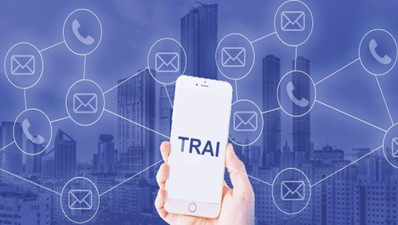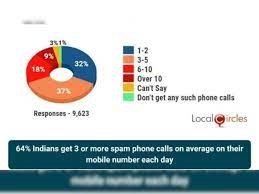
Telecom Regularity Authority of India(TRAI) has floated a consultation paper seeking comments, the potential introduction of Calling Name Presentation(CNP) should be increased in our country because the number of fraud and spam calls is increasing day by day.
CNP gives the information to called individual about the calling party. It will work similarly to Truecaller and Bharat Caller ID and Anti-Spam. Its motive is to ensure telephone subscribers are able to make an informed choice about incoming calls and prevent harassment by unknown or spam callers.
Comments for the consultation paper are invited until December 27, 2022.
What is the Purpose?
- Presently, the number of the calling person appears on the potential receiver’s handset.
- Many genuine calls remain unanswered as names and identities do not appear.
- Rising concerns about robocalls, spam calls, and fraudulent calls.
Local Circles’ survey (Community research platform) defines that-

- 64% of respondents receive a minimum of 3 spam calls each day.
- 95% of respondents are receiving them despite being registered on Do-not-Call Directory (DND).
Truecallers’ 2021 Global Spam and Scam Report said that-
- The average number of spam calls per user in every month (in India) stood at 16.8.
- Total spam volumes received were more than 3.8 billion in calls in October.
Proposed Models?
1. First Model:
- The telecom service provider (TSP) is going to establish and operate a CNAP database of its subscribers.
- Callers’ TSP would have to find the relevant data from its own database.
- Name identity of the calling entity.
- Sent it to the potential receiver’s TSP to be presented to the ultimate user.
2. Second Model:
- The operator of the calling person shares its CNAP database with the receiver’s operator.
- The calling operator would permit the receivers’ operator to access its database for the callers’ CNAP data.
- The operator could use their respective mobile number portability databases.
3. Third Model:
- Third-party operate a centralized database.
- Receivers’ operators search into a centralized database to retrieve and present the callers’ data.
- TSPs give information to the database while enrolling new subscribers or deactivating existing ones.
4. Fourth Model:
- Each TSP maintains a CNAP database,
- Receive a copy of a synchronized central database operated by a third party.
- The call is eased as per the routine procedure.
- The receivers’ operator has access to both the centralized and the own database.
- Lookup is, therefore, internal.
TRAI proposing to introduce it in Feature phones?
- Yes, it is going to propose.
- DoT has requested TRAI to explore the expediency and network readiness,
- Providing CNAP to all telephones subscribers, including feature-phone users.
- Feature phones may struggle with constantly updating information.
Challenges
- Latency:
- Slight enhancement in the time to set up a call.
- Responsiveness may suffer when moving from a faster wireless network (4G or 5G) to a comparatively slower one (2G or 3G).
- Privacy:
- How CNAP mechanism would balance the callers’ right to remain anonymous,
- An important component of the right to privacy.
- An individual can opt to remain anonymous for multiple reasons.
Way forward
- The system gets built and hundreds of people are able to utilize the system,
- Then only the system would have a meaningful impact.
- Provided Interface should be user-friendly with an effective mechanism.
- Active participation from the subscribers will only ensure that spammers are identified and are unable to make further calls.
- Government should also invest in digital literacy, skilling the citizens to navigate and use the technology better.



